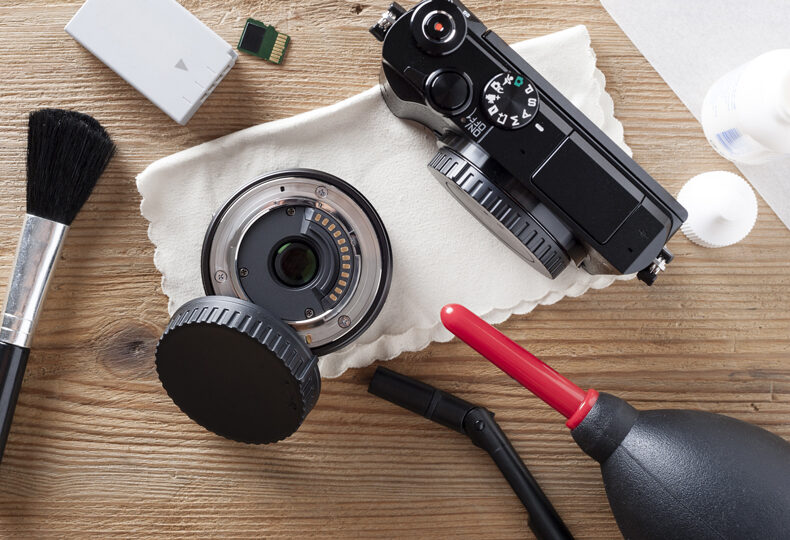You might not think that your tripod needs to be cleaned, but the truth of the matter is that it does. A tripod is a camera’s best friend– but the relationship only goes one way if your camera’s gear is dirty. Dust and dirt on gears can cause lags in performance and even damage to the camera. So, maintaining your equipment is important for both you and your photography skills.
Don’t worry though! All it takes is following these 8 simple steps to freshen up your tripod and keep it clean for years to come.
Start by removing the head of the tripod. The head is the topmost part of the tripod that holds your camera.
Next, you’ll need to clean it with a brush or cloth. You can use water or an alcohol-based cleaner.
Make sure to clean both sides– especially the side where your camera is mounted.
Also, make sure to check if there are any screws on the head of the tripod. If there are, you might need to tighten them up with a screwdriver or spanner.
Finally, reattach the head and enjoy shooting again!
The legs of a tripod are a high traffic area. They’re in contact with the floor, so they have a tendency to collect dust and dirt. To clean them, you can use a cotton swab dipped in alcohol if you have it available, or just some water and soap. Make sure that you wipe both sides of the leg well.
3. Clean the body
The outside of the tripod is the easiest place to clean. Use a damp cloth with a mild soap or water and wipe down. Be sure to use a cloth with a soft texture, not a rough one– this might scratch the surface. Give it a good rinse afterwards and dry with a clean, dry cloth.
If you’re not using your tripod, the first thing you should do is store it in its bag. However, when storing your equipment, make sure to clean the bag and cushion. This will ensure that the next time you use your tripod, it won’t smell like old feet.
-Use a clean cloth or paper towel to wipe down the tripod with water and soap. Make sure to thoroughly clean all parts of the tripod, paying close attention to areas where dust accumulates.
Start by wiping down the tripod with a clean, dry cloth. Don’t forget to wipe the ends of the legs and any knobs/screws. This will ensure that your tripod is nice and clean, which you can tell by looking at it.
The first thing you should do is to pay attention to the tripod’s joints. If they have anything oily, use a cloth to wipe it off. This will help ensure that your camera can smoothly glide from point A to point B without being too rough.
One of the worst things you can do for your tripod is to leave it in the sun. The sun naturally emits UV rays which can cause a variety of issues if left unprotected for too long. From fading colors to weakening the material, exposing your tripod to UV rays will slowly break down its functionality and strength. To protect your equipment from sunlight, keep it covered with a protective material.
In order to prevent dust from getting onto your camera’s gears, it’s best to clean off any dirt or dust that’s accumulated on the tripod before use. One way to do this is by using a vacuum cleaner with a brush attachment, but you can also use a dry cloth if there isn’t much debris on the surface. The important thing is just making sure that there’s nothing left that could potentially disrupt your photo shoot or damage your equipment.
Another way to ensure that your camera won’t lags or malfunction during shoots is by lubricating its gears beforehand (just like you would any machine). Try using either WD-40 or WD-40 Specialist– they’re both excellent gear lubricants unlike some other types of lubricants which are too oily and stickier than necessary (which could potentially damage parts). Just make sure you don’t over-lubricate as this will lead to more problems than solutions!
First, you might want to check your tripod for loose screws or nuts. A loose screw or nut could be the reason why your gear isn’t responding as it should. You may not know that there is a problem until you go to tighten it up and snap– now the screw has fallen out.
You can use a small brush to sweep away any dust or dirt around the fasteners. This will help ensure that they are all securely tightened up. If you find that they are too tight, loosen them up with an Allen wrench before tightening them back down with pliers.
The very first thing you’ll want to do is make sure that any screws or nuts that may have come loose are tightened. You should also check to make sure the locks on the tripod are still in place. If not, you should tighten them as well.
